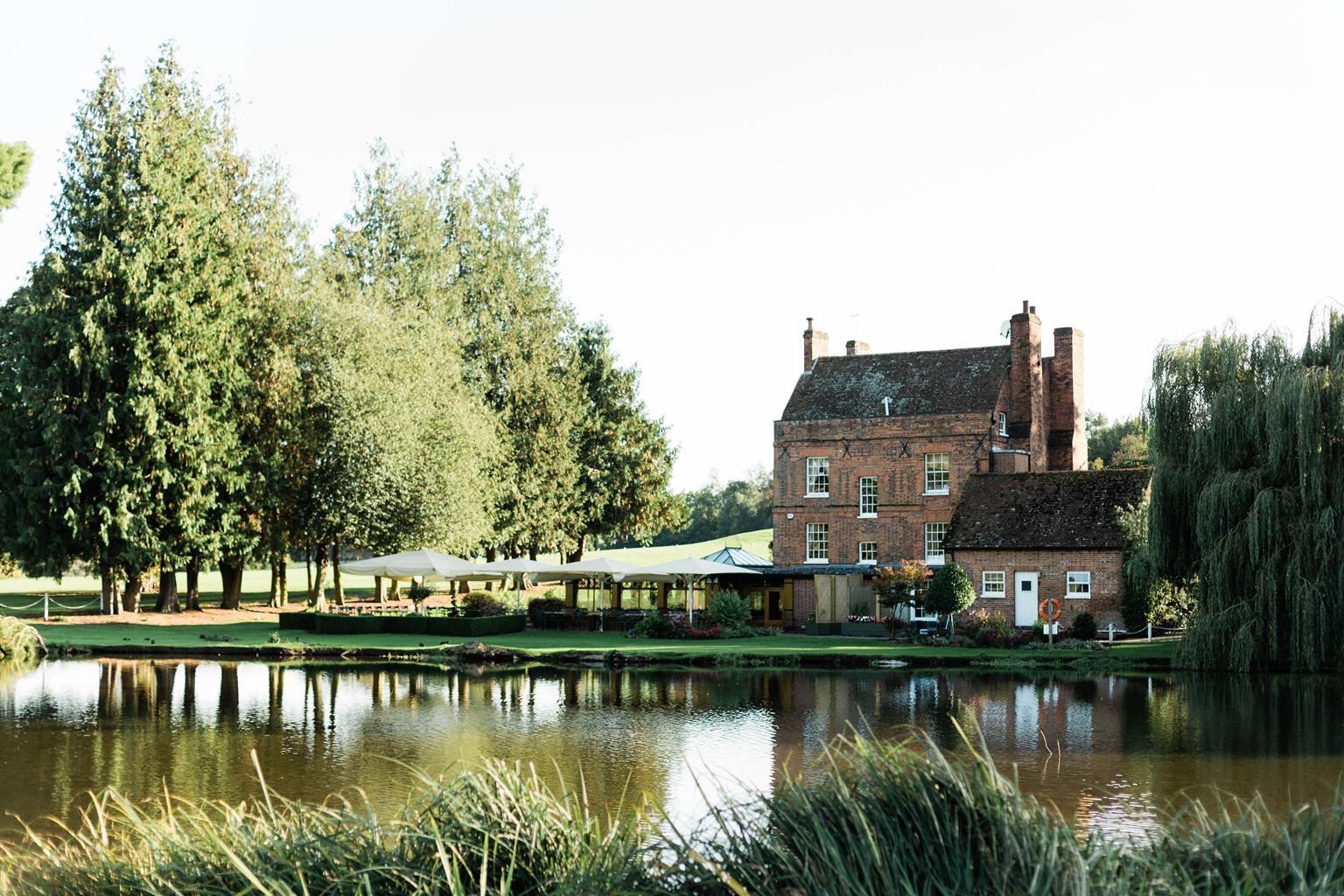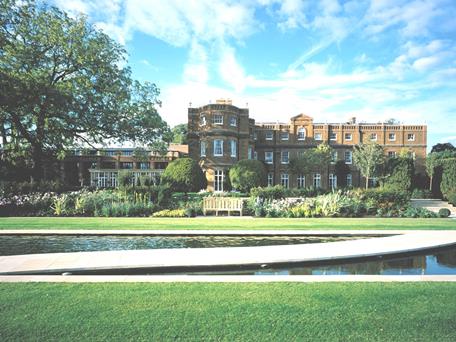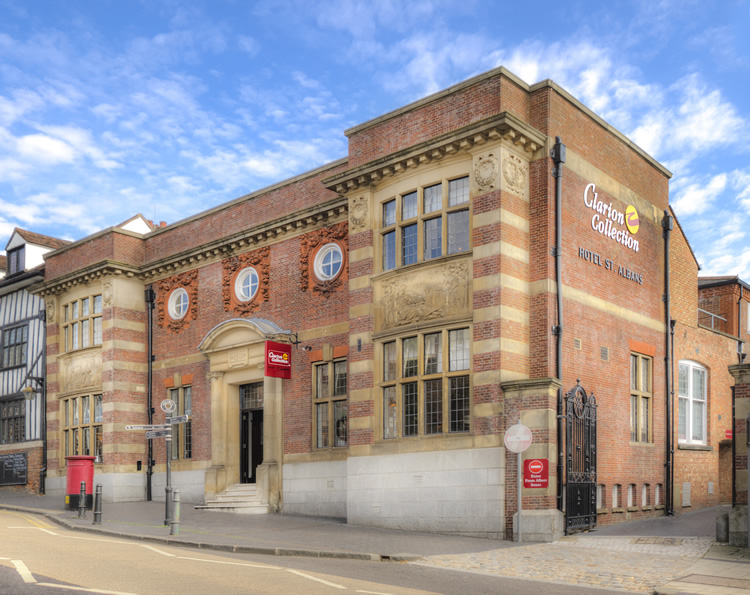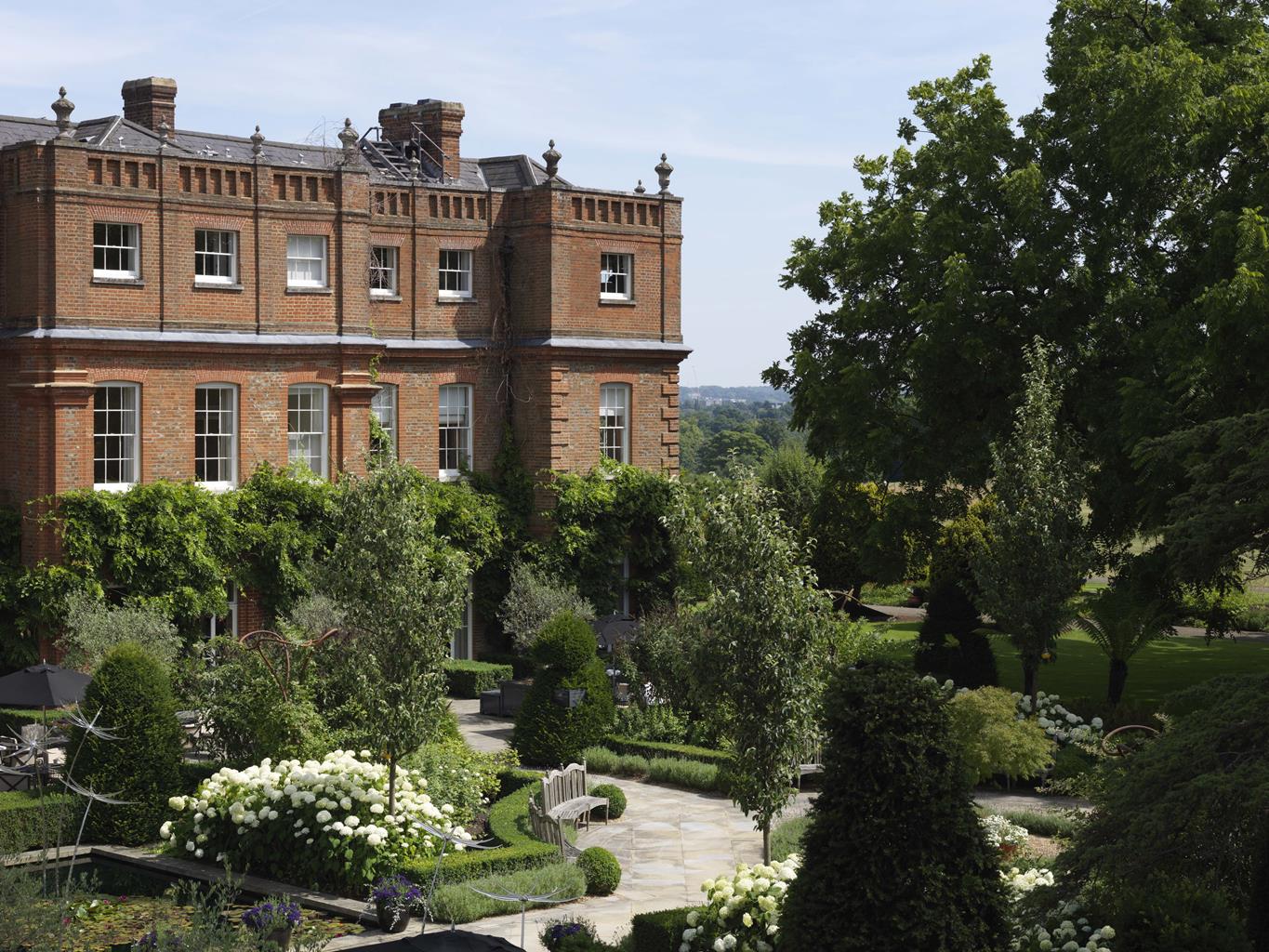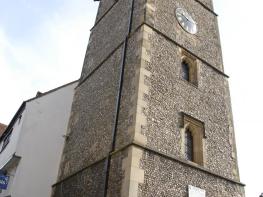In a prime position opposite the Cathedral, Clarion Collection Hotel St Albans is right at the…
St Albans and Roman Verulamium

3.75 miles (6kms)
About the walk
The very large Roman town of Verulamium dates back to soon after AD 43 and the Emperor Claudius’ conquest of what became known as Britannia. A municipium was built, but in AD 60, before it could assume greatness, Boudicca, Queen of the Iceni, burned it to the ground along with Roman London and Colchester. Much rebuilding and improvement followed, with the town expanding by the early 3rd century to enclose 200 acres (81ha), its high stone walls over 2 miles (3.2km) long. This walk only covers the half south of Bluehouse Hill, but includes the main excavated areas and those with the best remaining Roman walling and visible evidence. A visit to the Verulamium Museum is a must to find out more.
The town straddled Watling Street and the remains of the London Gate through which it entered the town can be seen early in the walk, with the best surviving stretch of the great walls and the massive ditches to its west. This was the south wall, while Watling Street continued northwestwards, passing the site of the Roman basilica or ‘town hall’ before going past the Roman theatre. Here you can follow a permissive path through the Gorhambury Estate, on the course of Watling Street, for a further 600 yds (549m) to the site of the north gate out of the town.
Abbey and Town
This first section of the walk is more rural before you enter the city, which for centuries had been dominated by the great abbey of St Albans. It was named after Britannias’s first Christian martyr who was beheaded here in AD 209. The abbey had one of England’s finest Norman churches, which became the parish church after the abbey was dissolved in 1539. The abbey had used the ruined Roman city as a quarry, as had St Michael’s Church and you can see numerous thin Roman bricks used in their construction. Apart from the abbey church only the great gatehouse of 1360 remains of the vast complex of abbey buildings. Outside this gatehouse was Romeland, now largely occupied by a graveyard but formerly an open area where fairs were held and visitors to the abbey received, from kings to paupers. Pilgrims came to visit the shrine of St Alban. Smashed up when the Abbey was dissolved, it was restored in the 1870s after it was found in an astonishing 2,000 pieces.
The town is exceptionally fine, with many Tudor and later buildings and a very long marketplace, the southern part encroached by 16th- and 17th-century buildings and the current Town Hall. All seems calm and tranquil now, but relations between the town and the abbey were notoriously bad. Still the town won in the end when the abbey was dissolved. The great church became their parish church, the abbey buildings were destroyed and used for building materials around the town, the abbey grounds became a municipal park and the abbey fishponds duck ponds.
Walk directions
From the car park follow the gravel path past the Westminster Lodge Running Track and at the signpost turn left, signed ‘Roman Gate and Walls’. This section of the walk shows you the scale of the Roman town and its defences, passing first the site of the London Gate. Beyond this you walk alongside the longest surviving stretch of the town’s great walls. To your left is a spectacular section of Roman ditch, albeit now filled with trees and scrub, up to 95ft (29m) across and 20ft (6.1m) deep. Cross the ditch on a footbridge to a road.
At the road turn right and after 40 paces go right on a path down into the southwest section of the Roman ditch. Emerging from the scrub, continue alongside trees to head across grass towards a red dog-waste bin and pass between two sycamores. Turn right here on to a path to the left of a residual hedge. Descend towards St Michael’s Church and join a track to the right of the hedge. The site of the Roman city’s forum or central square is on your left. The church was built on the site of the basilica or Roman town hall. Ahead is the Verulamium Museum.
Turn left at a gate to St Michael’s Church. Leave the churchyard and cross the main road, the A4147, to visit the Roman theatre site. Retrace your steps and pass along St Michael’s Street, crossing the River Ver and go right into Fishpool Street. Pass Romeland, the site of the marketplace at the abbey gates, and continue into George Street.
Carry on into High Street and then turn left into French Row. Pass the Clock Tower, a rare medieval curfew belfry built around 1410. Continue to the marketplace, which stretches as far as St Peter’s Church. Retrace your steps, passing to the left of the Town Hall, cross the High Street to go downhill and turn right into Sumpter Yard. After visiting the Abbey church cross to the surviving Abbey Gatehouse.
Now turn left down Abbey Mill Lane and when the lane splits keep right to pass Ye Olde Fighting Cocks pub. Cross the bridge and walk past the lakes, originally the Abbey’s fishponds. Beyond is a stretch of Roman wall. Turn left at the footpath sign and return to the car park.
Additional information
Urban streets, then parkland, no stiles
Gentle hills, parkland, a Roman site and historic town streets
On lead in St Albans, but can roam free in parkland
OS Explorer 182 St Albans & Hatfield
Car park between Abbey Theatre, Westminster Lodge Leisure Centre and Athletics Track Arena, off Holywell Hill
Fishpool Street and Town Hall and Westminster Lodge Running Track
WALKING IN SAFETY
Read our tips to look after yourself and the environment when following this walk.
Find out more
Also in the area
About the area
Discover Hertfordshire
As Hertfordshire is so close to London, many of its towns have become commuter havens. St Albans, less than 19 miles (30km) from the capital, has retained its distinctive character, along with many historic remains. The Roman city of Verulamium is situated in a nearby park, and excavations have revealed an amphitheatre, a temple, parts of the city walls and some house foundations. There are also some amazing mosaic pavements.
The abbey church at St Albans is thought to have been built on the same site where St Alban met his martyrdom in the 3rd century. The abbey was founded in 793 by King Offa of Mercia, and contains the saint’s shrine, made of Purbeck marble. Lost for years, it was discovered in the 19th century, in pieces, and restored by the designer of the red telephone box, Sir Giles Gilbert Scott. The abbey also contains some wonderful medieval wall paintings. Nicholas Breakspear was born in St Albans, the son of an abbey tenant. In 1154 he took the name Adrian IV, and became the first, and so far only, English pope. Another famous son of Hertfordshire was Sir Francis Bacon, Elizabethan scholar and Lord High Chancellor, born in Hemel Hempstead in 1561.
Nearby stays
Restaurants and Pubs
Nearby experiences
Recommended things to do
Why choose Rated Trips?
Your trusted guide to rated places across the UK
The best coverage
Discover more than 15,000 professionally rated places to stay, eat and visit from across the UK and Ireland.
Quality assured
Choose a place to stay safe in the knowledge that it has been expertly assessed by trained assessors.
Plan your next trip
Search by location or the type of place you're visiting to find your next ideal holiday experience.
Travel inspiration
Read our articles, city guides and recommended things to do for inspiration. We're here to help you explore the UK.




